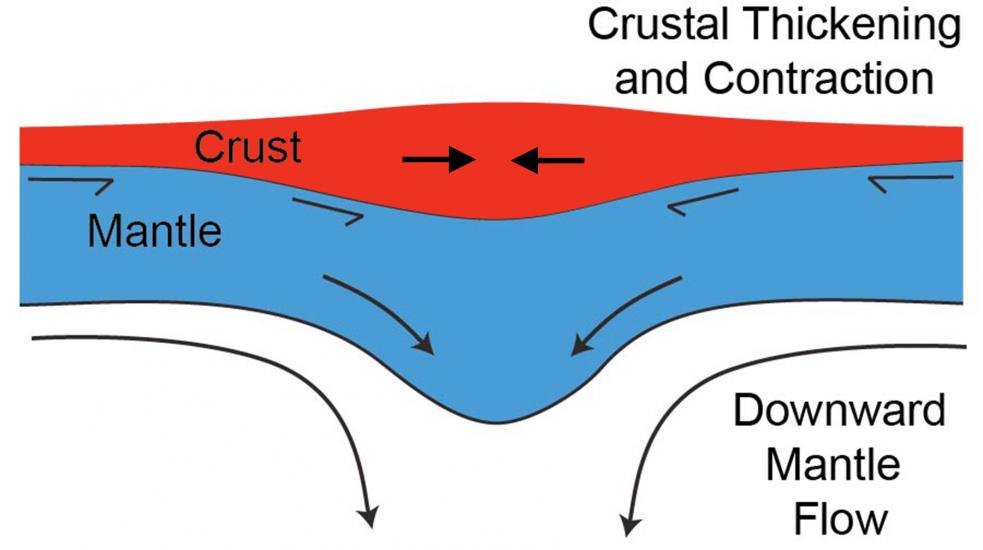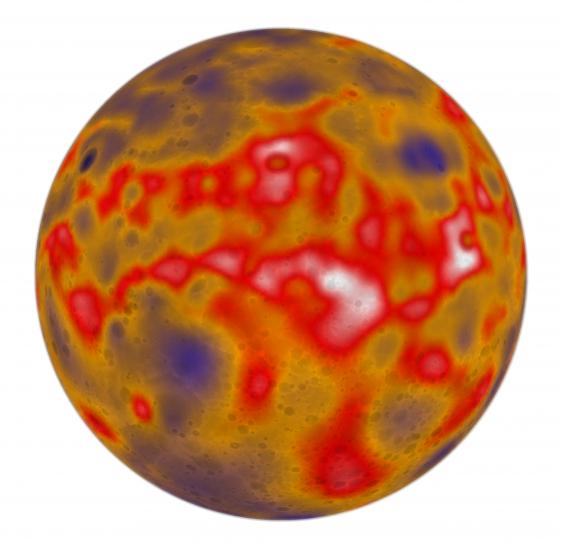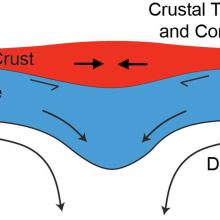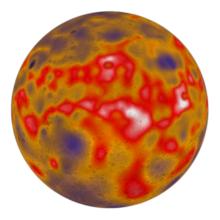
Media Inquiries
Public Inquiries
New Paper Published by Smithsonian Scientist Tom Watters
Findings from a recently published paper led by Smithsonian senior scientist Thomas R. Watters reveal evidence that flow in the mantle of Mercury may have thickened its crust and formed long clusters of mountainous fault scarps. The paper “Mercury’s Crustal Thickness and Contractional Strain,” published in the journal Geophysical Research Letters, presents new models of the thickness of Mercury’s crust. Clusters of fault scarps, some extending over thousands of kilometers, are found in areas of thick crust, suggesting a connection on Mercury between mantle flow and tectonics like that found on Earth.
The new models of crustal thickness were created using gravity and topographic data obtained by NASA’s Mercury Surface, Space Environment, Geochemistry and Ranging (MESSENGER) spacecraft. The association between linear clusters or belts of large fault scarps on Mercury and its thickest crust may be evidence of downward mantle flow. On Earth, such long collections of faults are formed by plate tectonics where the relative motion of the plates localizes faults along their margins. On Mercury, a one-plate planet, downward mantle flow could thicken and contract Mercury’s crust, helping to form the long belts of fault scarps, a process analogous to intra-plate tectonics on Earth.
“How Mercury’s long clusters of fault scarps and ridges formed has been a bit of a mystery,” Watters said. “On a one-plate planet like Mercury undergoing mostly global contraction from cooling of the interior, the concentration of large faults into elongated belts is not expected. Some process in combination with global contraction is influencing the grouping of the faults.”
Images, topography and gravity data obtained by MESSENGER have revolutionized the view of the innermost rocky planet in the solar system. The global population of long, narrow cliff-like mountains indicates that Mercury has contracted and its crust shrunken, mostly from the loss of interior heat. Forces from global contraction, however, should result in a global array of faults that are uniformly scattered around the planet. The organization of fault scarps into long belts cannot be accounted for by global contraction alone. An analysis of the new models of Mercury’s crustal thickness at the location of the fault scarps indicates that the contractional strain (the amount the crust has been compressed) is greatest in areas of thick crust. This suggests a causal relation between the formation of thick crust and the localization of faults.
One mechanism that can thicken the crust and induce contraction is mantle downwelling. Mantle downwelling is a mechanism that has been proposed to form fault belts in intra-plate settings, far from plate margins, on Earth. A new model of mantle dynamic pressure that shows positive values, indicating upward flow, and negative values, indicating downward flow, show a correlation between regions with greater numbers of faults, or higher contractional strain, and regions of negative mantle dynamic pressure.
“The correlation between model negative mantle dynamic pressure and regions with clusters of fault scarps supports the contribution of recent and perhaps ongoing downward mantle flow on Mercury,” Watters said. These results are consistent with the emerging picture of Mercury as a one-plate planet that has very recent and even current tectonic activity.”
Watters is a senior scientist in the Center for Earth and Planetary Studies at the National Air and Space Museum and a member of the MESSENGER science team. MESSENGER was a NASA spacecraft launched Aug. 3, 2004, and it began orbiting Mercury March 18, 2011. The mission was managed by the Johns Hopkins University Applied Physics Laboratory. Although MESSENGER completed its primary science objectives by March 2012, the spacecraft’s mission was extended two times. The mission ended with a planned impact on the surface of Mercury April 30, 2015.
The National Air and Space Museum in Washington, D.C., is located at Sixth Street and Independence Avenue S.W. The Steven F. Udvar-Hazy Center is located in Chantilly, Virginia, near Washington Dulles International Airport.
# # #







